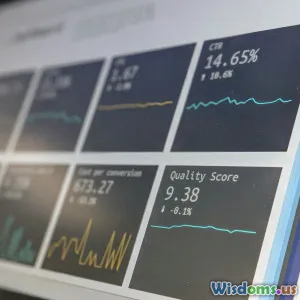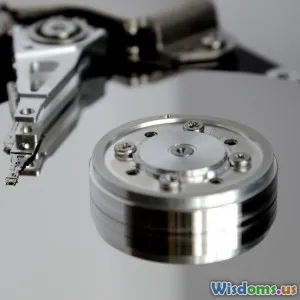
Why Hypothesis Testing Often Fails in Real World Data Science Projects
10 min read Explore why hypothesis testing frequently fails in applied data science and how to navigate its pitfalls for better decision-making. (0 Reviews)
Why Hypothesis Testing Often Fails in Real World Data Science Projects
By [Author]
Introduction
Hypothesis testing has long been a bedrock technique in scientific discovery, modeling, and decision-making. It promises a clear answer — a simple accept or reject decision about a theory based on observed data. Yet, in the complex world of data science and big data applications, this seemingly straightforward tool frequently fails to deliver reliable insights. Why does a method so central to statistics underperform in so many real-world projects?
From misaligned assumptions to human cognitive biases and practical data issues, the gap between classical hypothesis testing theory and real data science practice is vast. This article uncovers the main reasons behind these frequent failures, enriched with examples from industry and research, and offers a roadmap for practitioners seeking to leverage hypothesis testing more effectively or to embrace alternative methods when appropriate.
The Promise and Pitfalls of Hypothesis Testing
Hypothesis testing originated in controlled experiments and randomized clinical trials where conditions can be strictly managed. It operates by setting a null hypothesis (usually a status quo or no-effect statement) and measuring data evidence for rejecting it in favor of an alternative hypothesis.
In real-world data science projects, data seldom fit the ideal test conditions:
- Data may be massive but noisy, unstructured, and corrupted by missing values or measurement errors.
- Samples may not represent the population properly.
- Assumptions of independence and distribution (normality, for example) often do not hold.
Let’s examine why these issues frequently trip up hypothesis testing results.
1. Violations of Core Statistical Assumptions
Hypothesis tests rely on mathematical formulas that require strict assumptions. When these are violated, p-values become unreliable.
Example: In A/B testing online, independence is violated because a user might see both versions over time. In marketing campaigns, customer behaviors exhibit temporal or spatial dependencies that classical tests do not consider. Without independence, false positive rates increase dramatically.
Example: Many parametric tests assume data are normally distributed. But user engagement metrics, sales, or click counts often follow skewed or heavy-tailed distributions. Applying t-tests without checking distribution can mislead practitioners into overconfident decisions.
2. Multiple Testing and P-Hacking
In data science, large exploratory datasets tempt analysts to test many hypotheses simultaneously without adjusting for multiplicity.
Example: In genomics, testing thousands of gene expressions individually, ignoring multiple comparison corrections, leads to thousands of false discoveries. Similarly, data scientists searching through dozens of features or segments may stumble on seemingly significant results by chance alone.
This problem worsens when analysts consciously or unconsciously engage in p-hacking — selectively reporting only significant outcomes, 'tweaking' analyses until p < 0.05 is achieved.
3. Small Effect Sizes and Large Samples
In big data projects, even tiny differences become statistically significant but practically meaningless.
For instance, a massive dataset comparing two behavioral patterns might yield a p-value less than 0.001 for a negligible difference in means. This can mislead stakeholders into making costly or unnecessary interventions.
4. Poor Data Quality and Measurement Errors
Real-world data is messy: incomplete, incorrect, and biased.
Example: Sensor measurements for an industrial IoT project have irregular quality due to hardware failures, causing unreliable data that invalidate hypothesis test assumptions.
Without rigorous preprocessing and cleaning, hypothesis testing results reflect noise and artifacts rather than genuine signals.
5. Complex Dependencies and Non-Stationarity
Many real world datasets exhibit time-varying dynamics, seasonality, and network effects. Classical hypothesis tests typically assume independent and identically distributed (iid) observations.
Example: In financial forecasting, stock price returns impact each other in a networked structure, causing correlations over time. Ignoring these dependencies renders p-values meaningless.
Real-World Case Studies
Case Study 1: Online A/B Testing Failure
A leading tech company ran an A/B test improving their user interface. The test data seemed robust, and the hypothesis test yielded a p-value below 0.05. Confident, executives rolled out changes.
Soon after, product usage degraded, complaints increased, and revenue declined.
Investigation revealed that repeated user exposure to both variants violated independence assumptions. Additionally, the high volume of concurrent tests skewed multiplicity control. The ‘significant’ results were false positives—showcasing how misunderstanding hypothesis test assumptions can lead to costly errors.
Case Study 2: Health Data Hypothesis Testing Challenges
In clinical data science, researchers analyzed patient records to detect risk factors for diseases. Tests showed that a rare medication correlated significantly with positive outcomes.
However, further scrutiny revealed selection bias in patient sampling and confounding variables unaccounted for. The naive hypothesis test ignored the complexities of observational data, resulting in misleading conclusions.
Strategies to Address Hypothesis Testing Failures
1. Embrace Data Exploratory Analysis and Validation
Before hypothesis testing, deeply understand data distributions, missingness, and dependencies. Use data visualization and diagnostic tests.
2. Choose Appropriate Tests and Corrections
If assumptions are violated, use nonparametric methods (e.g., Wilcoxon test), bootstrapping, or permutation tests that require fewer assumptions. Apply corrections such as Bonferroni or False Discovery Rate for multiple comparisons.
3. Leverage Domain Knowledge
Integrate subject matter expertise to formulate meaningful and relevant hypotheses, reducing the risk of chasing spurious correlations.
4. Control for Bias and Confounders
In observational data, use causal inference techniques, such as propensity score matching or instrumental variables, as hypothesis testing alone does not establish causation.
5. Focus on Effect Sizes and Confidence Intervals
Report and interpret effect sizes alongside p-values to assess practical significance.
6. Utilize Simulation and Resampling Techniques
When assumptions are dubious, resampling methods help estimate the sampling distribution empirically.
7. Document and Preregister Hypotheses
Preregistration can mitigate p-hacking by specifying hypotheses and analysis plans before seeing data.
Alternatives and Complementary Approaches
- Bayesian hypothesis testing delivers probabilistic interpretations of hypotheses, often more intuitive in real-world contexts.
- Machine learning models can capture complex dependencies and nonlinearities, providing predictive power where traditional tests fail.
- Exploratory data analysis combined with domain-driven modeling often produces more actionable insights.
Conclusion
Hypothesis testing remains a foundational tool in data analysis but is often misapplied or over-relied upon in real world data science projects. Many failures stem from violating statistical assumptions, ignoring data complexities, and misinterpreting p-values.
By acknowledging these limitations, adopting robust statistical techniques, integrating domain knowledge, and embracing complementary approaches, practitioners can greatly improve the validity and impact of their data-driven decisions.
This nuanced understanding transforms hypothesis testing from an inflexible checklist task into a powerful instrument within a thoughtful data science toolkit.
References
- Gelman, Andrew, et al. "The garden of forking paths: Why multiple comparisons can be a problem, even when there is no 'p-hacking' or 'data dredging'." (2013).
- Wasserstein, Ronald L., and Nicole A. Lazar. "The ASA’s statement on p-values: context, process, and purpose." The American Statistician 70.2 (2016): 129-133.
- Lindley, D.V. "Bayesian Statistics: A Review." SIAM, 2000.
- Ioannidis, John P.A. "Why most published research findings are false." PLOS medicine 2.8 (2005): e124.
Author's Note: Understanding hypothesis testing’s strengths and limits is crucial to unlocking true data science value in real applications. Stay curious and critical!
Rate the Post
User Reviews
Popular Posts




















